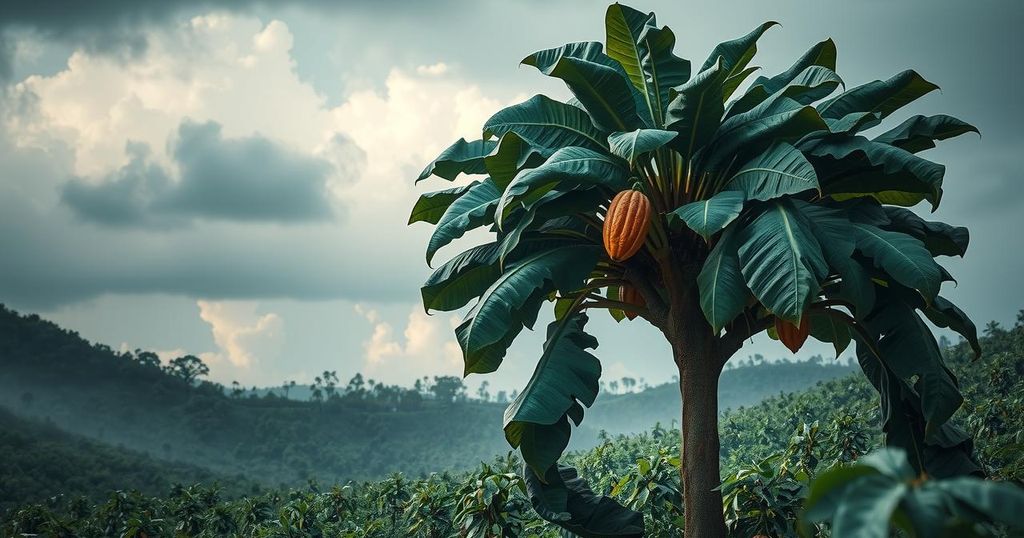A study suggests that climate change could reduce cocoa-suitable areas in West and Central Africa by 50% by 2050, with countries like Ivory Coast and Ghana facing the most significant impacts. The research utilized the CASEJ model to analyze shifts in cocoa production and potential yield declines due to changing climate conditions.
A recent study indicates that climate change poses a significant threat to cocoa production in West and Central Africa, areas which contribute over 70 percent of the global cocoa supply. The research, conducted in Ivory Coast, Ghana, Nigeria, and Cameroon, utilized a mechanistic cocoa crop model called CASEJ. This model evaluates the physiological and biochemical responses of cocoa plants to shifting climate conditions, while predicting both water-limited and non-limited growth scenarios.
The study examined historical and projected yield data from 1980-2010 and 2030-2060. Results indicate a potential loss of up to 50 percent of suitable cocoa-producing regions by 2050, largely due to changing temperatures and rainfall patterns. The northern regions of Ivory Coast and Ghana are expected to be particularly hard hit, with an estimated 12 percent decrease in yield, followed by Nigeria at 10 percent and Cameroon at 2 percent.
As regions currently suitable for cocoa may become less favorable, there is an anticipated shift in cocoa production toward eastern countries such as Nigeria and Cameroon. This geographic shift presents challenges for ecosystems, especially in Cameroon, which maintains some of Africa’s last remaining rainforests. Balancing cocoa production expansion with forest conservation will be critical moving forward.
The models used in the study factor in prevailing knowledge of cocoa’s physiological traits alongside predicted climate changes. However, uncertainties remain regarding the consequences of elevated atmospheric carbon dioxide, which may enhance photosynthesis and mitigate some negative effects from drought and heat. Ongoing research is essential to understand the relationships between climate variations and cocoa plant responses thoroughly.
The impact of climate change on cocoa production is a pressing concern, given that West and Central Africa account for a substantial majority of the global cocoa supply. The cocoa crop is sensitive to climatic variations, particularly in temperature and precipitation. This necessitates thorough investigation and proactive measures to ensure sustainable cocoa farming practices in these regions, which are vital to both local economies and the chocolate industry globally.
In summary, climate change poses a detrimental threat to cocoa farming in West and Central Africa, with projections indicating a potential reduction of suitable agricultural land by 50 percent by 2050. Key cocoa-producing countries like Ivory Coast and Ghana may see significant yield declines, while production may shift toward Nigeria and Cameroon, raising concerns about environmental impacts. Addressing the dual challenges of adapting cocoa production to climatic changes and preventing deforestation will be essential to safeguard both agricultural resilience and biodiversity.
Original Source: www.downtoearth.org.in




